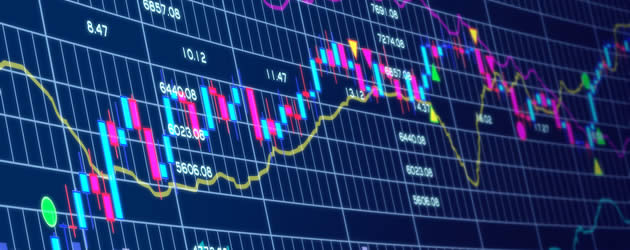 With a greater amount of British data than Australian due out next week, the Pound Sterling to Australian Dollar (GBP/AUD) exchange rate movement is likely to be dictated by UK publications.
With a greater amount of British data than Australian due out next week, the Pound Sterling to Australian Dollar (GBP/AUD) exchange rate movement is likely to be dictated by UK publications.
Pound Sterling to Australian Dollar (GBP/AUD) Declines on Chinese Intervention
The Pound Sterling to Australian Dollar (GBP/AUD) declined on Friday as the UKIP by-election weighed heavily on the Pound and commodity driven currencies were boosted by Chinese intervention.
China chose to cut interest rates for the first time since 2012 in order to support the domestic economy, and the commodity-driven Australian Dollar advanced accordingly.
In the view of analyst Jasper Lawler; ‘The Chinese government have obviously decided to act on the front foot and prevent the manufacturing sector dropping into contraction. The overriding prospect of more global stimulus will boost risk-taking, push yields down and should feed through into higher demand for equities.’
Industry expert Lingling Wei also observed; ‘The surprise move by the People’s Bank of China late Friday comes after a series of piecemeal easing measures that failed to encourage banks to lend and companies to borrow. Several economic indicators—from investment growth to factory production to retail sales—showed weakness last month. Economists say China could miss its annual growth target—set at about 7.5% for 2014—for the first time since the 1998 Asian financial crisis.’
GBP/AUD Forecast to Hold Steady at the Beginning of the Week
Given the complete absence of British data on Monday, and the distinct lack of Australian data, the GBP/AUD exchange rate is likely to hold relatively steady over the course of Monday. German data, however, could potentially impact upon Sterling movement.
In terms of the solitary Australian data publication, the Roy Morgan Weekly Consumer Confidence Index doesn’t have a lot of potential to influence ‘Aussie’ (AUD) movement. This is especially true given that the publication is due late on Monday evening.
UPDATE
The Pound Sterling to Australian Dollar exchange rate is currently trending in the region of 1.8083.
Despite anxieties regarding the recent by-election victory of an anti-European Union political party, the Pound has advanced against the Australian Dollar on Monday morning. This is as a result of continued declination in the iron ore market, which capped a fifth consecutive weekly drop. ‘The worst is yet to come,’ Liang Ruian, a fund manager at Shanghai-based Jianfeng Asset Management Co., said in an interview today. ‘Not only will we see increased supply from Brazil and Australia, also there’s an element of collapsing demand which hasn’t been reflected in the price yet.’
Monday morning’s European data has printed positively which will likely compound ‘Aussie’ (AUD) losses, causing the Pound Sterling to Australian Dollar exchange rate to strengthen.
GBP/AUD to Advance after UK Housing Data?
A complete absence of Australian data on Tuesday is likely to see movement in the South Pacific asset dictated by foreign currency changes. However, Monday evening’s Consumer Confidence Index is likely to have a bearing on early trading in the London session.
Sterling movement is most likely to be dictated by UK Loans for House Purchase, which hit 39,271 previously. Nationwide House Prices data will also be of interest to those invested in the Pound, although the data has low weighting in terms of the provocation of volatility.
GBP/AUD to Decline After GDP
Wednesday’s British data will be of significance for those trading with Sterling. UK Gross Domestic Product hit 3.0% previously, and is very important as an indicator for broad overall growth in the United Kingdom. However, with recent data indicating a slowdown in UK growth due to issues in the Eurozone, it is likely that UK GDP will cool (although there is not yet a forecast figure). CBI Reported Sales may also be of interest to those invested in the Pound, although is unlikely to have too great an impact on volatility compared with GDP data.
Australian Data, conversely, is of little significance in terms of the provocation of wider market volatility. However, due to a lack of data the few publications become significant in terms of initiating ‘Aussie’ movement. House Affordability, Construction Work Done and Consumer Sentiment will all be of interest to those trading with the Australian Dollar.
GBP/AUD to Trade within a Narrow Range amid a Dearth of Data
Thursday’s economic calendar is completely devoid of significant British and Australian data. With that in mind, the Pound Sterling to Australian Dollar exchange rate is unlikely to undergo heightened volatility.
Australian New Home Sales and Private Capital Expenditure may cause ‘Aussie’ changes given the lack of heavy-weight data. Chinese Industrial Profits, however, could impact upon the Australian Dollar exchange rate.
The UK Lloyds Business Barometer is also unlikely to spark marked changes for the Pound, although it may be of interest to those invested in GBP/AUD.
GBP/AUD to Strengthen if Consumer Confidence Improves
Friday’s Chinese Leading Index data has the potential to impact – the Australian Dollar. Australian Private Sector Credit data will also be of interest to those invested in the ‘Aussie’, although is unlikely to have a significant bearing on volatility.
In terms of British data, the solitary publication does have the potential to provoke wider market movement. The GFK Consumer Confidence Survey hit -2 previously and, although there is no forecast figure, is likely to improve given recent UK wages and inflation growth.
At the close of last week, the Pound Sterling to Australian Dollar exchange rate was trending in the region of 1.8015.

